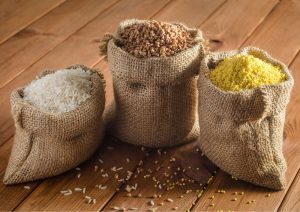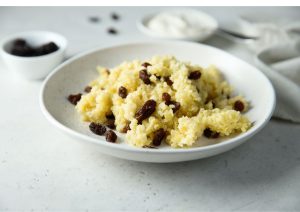Millets: A Smart Food Choice for Southeast Asia’s Health and Future
- August 16, 2025
- Posted by: admin
- Category: Natural Living,

In Southeast Asia, where diets are rapidly influenced by global food systems, local grains such as millets are being rediscovered as sustainable and highly nutritious options. Countries like Malaysia, Indonesia, Thailand, and Vietnam are experiencing increasing rates of obesity, diabetes, cardiovascular diseases, and micronutrient deficiencies. At the same time, climate stress and soil degradation demand a shift towards more resilient crops.
Millets—including finger millet, pearl millet, foxtail millet, little millet, kodo millet, and barnyard millet—are poised to play a transformative role in both public health and sustainable agriculture in the region.
Why Millets Matter for Southeast Asia
Millets are gluten-free, nutrient-dense, and naturally resistant to pests and drought. They require less water than rice or wheat and thrive in poor soils, making them ideal for climate-smart agriculture (FAO, 2018). For Southeast Asia, millets offer dual benefits:
- Nutritional Security: They address anaemia, calcium deficiency, and non-communicable diseases (NCDs).
- Food Sovereignty: Local millet production supports small farmers, especially in rainfed areas of Myanmar, Laos, and eastern Indonesia.
According to ICRISAT (2020), millets are essential for combating the double burden of malnutrition—the coexistence of undernutrition and obesity—that increasingly affects both rural and urban populations in the region.

Millet Spotlights: Grain-by-Grain Guide
Finger Millet (Ragi) – The Bone Builder
Finger millet is an excellent source of calcium (344 mg/100g), making it vital for bone health. It also contains iron and polyphenols that provide antioxidant and anti-diabetic effects.
- Best For: Pregnant women, elderly, children, and those with osteoporosis or anaemia.
- Clinical Insight: Studies show that finger millet reduces oxidative stress and helps control blood glucose levels in people with type 2 diabetes (Devi et al., 2014).
Pearl Millet (Bajra) – The Stamina Enhancer
Pearl millet is high in iron, magnesium, and protein, and supports cardiovascular health. It is especially helpful for populations engaged in physical labour and those at risk of metabolic diseases.
- Best For: Labourers, athletes, and rural populations with high physical workloads.
- Clinical Insight: Pearl millet helps lower LDL cholesterol and shows hypoglycaemic activity, aiding diabetes management (Chandrasekara & Shahidi, 2011).
Foxtail Millet (Thinai) – The Sugar Stabiliser
Foxtail millet has a low glycaemic index, is rich in zinc and magnesium, and helps regulate blood sugar levels.
- Best For: Urban professionals, students, and diabetics.
- Clinical Insight: Foxtail millet improves insulin sensitivity and reduces triglyceride levels in type 2 diabetic patients (Latha et al., 2020).
Little Millet (Samai) – The Gut Healer
Little millet is a versatile, easily digestible grain rich in B-vitamins and dietary fibre. It is particularly suitable for children, elderly, and people with digestive issues.
- Best For: Homemakers, children, and individuals with gut sensitivity.
- Clinical Insight: Little millet improves digestion and has antioxidant activity that supports metabolic health (Saleh et al., 2013).
Kodo Millet (Varagu) – The Inflammation Fighter
Kodo millet contains significant levels of polyphenols and lecithin, compounds known for their anti-inflammatory and neuroprotective properties.
- Best For: People with cardiovascular disease, autoimmune conditions, or chronic inflammation.
- Clinical Insight: Kodo millet has demonstrated lipid-lowering effects and oxidative stress reduction in animal models (Hadimani & Malleshi, 1993).
Barnyard Millet (Sanwa) – The Detox Millet
Barnyard millet contains more dietary fibre than most cereals and is rich in iron. It also supports weight management and blood sugar control.
- Best For: Diabetics, individuals with gluten sensitivity, and elderly people.
- Clinical Insight: Clinical studies suggest barnyard millet improves glycaemic response and reduces cholesterol levels (Pattanayak et al., 2023).
Millets for Every Group in Southeast Asia
Professionals and Students
Millets like foxtail and little millet enhance mental performance, reduce fatigue, and maintain energy throughout the day. B-complex vitamins and magnesium support brain function and stress regulation.
Labourers and Athletes
Pearl millet and barnyard millet provide essential nutrients for stamina, muscle recovery, and sustained energy—perfect for physically active jobs and sports.
Homemakers
Finger millet and little millet help regulate hormones, aid digestion, and maintain strong bones, making them ideal for women managing family responsibilities and long hours.
People with Medical Conditions
- Diabetics benefit from foxtail, barnyard, and kodo millets due to their low glycaemic response.
- Heart patients benefit from kodo and pearl millet, which reduce LDL cholesterol and support healthy blood pressure.
- Anaemic populations (common in rural parts of SEA) benefit from iron-rich millets like finger and barnyard millet.

Culinary Integration in Southeast Asia
Millets can be adapted into traditional Southeast Asian dishes:
- Malaysia/Indonesia: Millet nasi lemak, millet congee, or kuih made from millet flour.
- Thailand: Millet sticky rice, desserts, or soups.
- Vietnam: Millet pho noodles or spring roll wrappers.
- Philippines: Millet champorado or bibingka (rice cakes).
The mild taste of millets makes them easy to substitute for rice or wheat in daily meals.
Sustainable Agriculture and Local Economies
Millets are a lifeline for small-scale farmers and semi-arid regions. They require 30% less water than rice and have a shorter growing season. Countries with water stress like Vietnam’s Central Highlands, Thailand’s northeast, or eastern Indonesia can benefit significantly from millet-based agroecology (FAO, 2018).
By promoting millet cultivation, Southeast Asia can support:
- Soil regeneration.
- Lower carbon emissions.
- Diversified income for rural households.
Millet – the Future Food
As Southeast Asia confronts a new wave of nutrition-related health challenges, millets offer a time-tested, science-backed solution. They are not just “ancient grains” but future foods, capable of addressing diabetes, cardiovascular health, anaemia, and digestive disorders while strengthening local agriculture and resilience.
Reintroducing millets into daily diets—particularly finger millet, pearl millet, foxtail millet, little millet, kodo millet, and barnyard millet—can empower families, nourish communities, and regenerate the environment.
References
- Chandrasekara, A., & Shahidi, F. (2011). Millet grains and their nutraceuticals. Critical Reviews in Food Science and Nutrition, 51(6), 591–606.
- Dayakar Rao, B. R., et al. (2017). Nutritional and health benefits of millets. ICAR – Indian Institute of Millets Research.
- Devi, P. B., Vijayabharathi, R., Sathyabama, S., Malleshi, N. G., & Priyadarisini, V. B. (2014). Health benefits of finger millet (Eleusine coracana L.) polyphenols and dietary fiber: A review. Journal of Food Science and Technology, 51(6), 1021–1040.
- (2018). Millets and climate resilience. Food and Agriculture Organization of the United Nations.
- Hadimani, N. A., & Malleshi, N. G. (1993). Studies on milling, physico-chemical properties, and utilization of millets. Journal of Food Science and Technology, 30(1), 17–21.
- (2020). Millets and nutritional security in Asia: Smart foods for a sustainable future.
- Latha, S., et al. (2020). Effect of foxtail millet on insulin resistance and lipid profile in patients with type 2 diabetes mellitus. International Journal of Food Sciences and Nutrition, 71(2), 150–158. https://doi.org/10.1080/09637486.2019.1673405
- Pattanayak, R. M., Sahoo, D., & Patra, H. K. (2023). Therapeutic potential of barnyard millet: An overview. Journal of Ethnic Foods, 10(1), 1–9.
- Saleh, A. S., Zhang, Q., Chen, J., & Shen, Q. (2013). Millet grains: Nutritional quality, processing, and potential health benefits. Comprehensive Reviews in Food Science and Food Safety, 12(3), 281–295.
